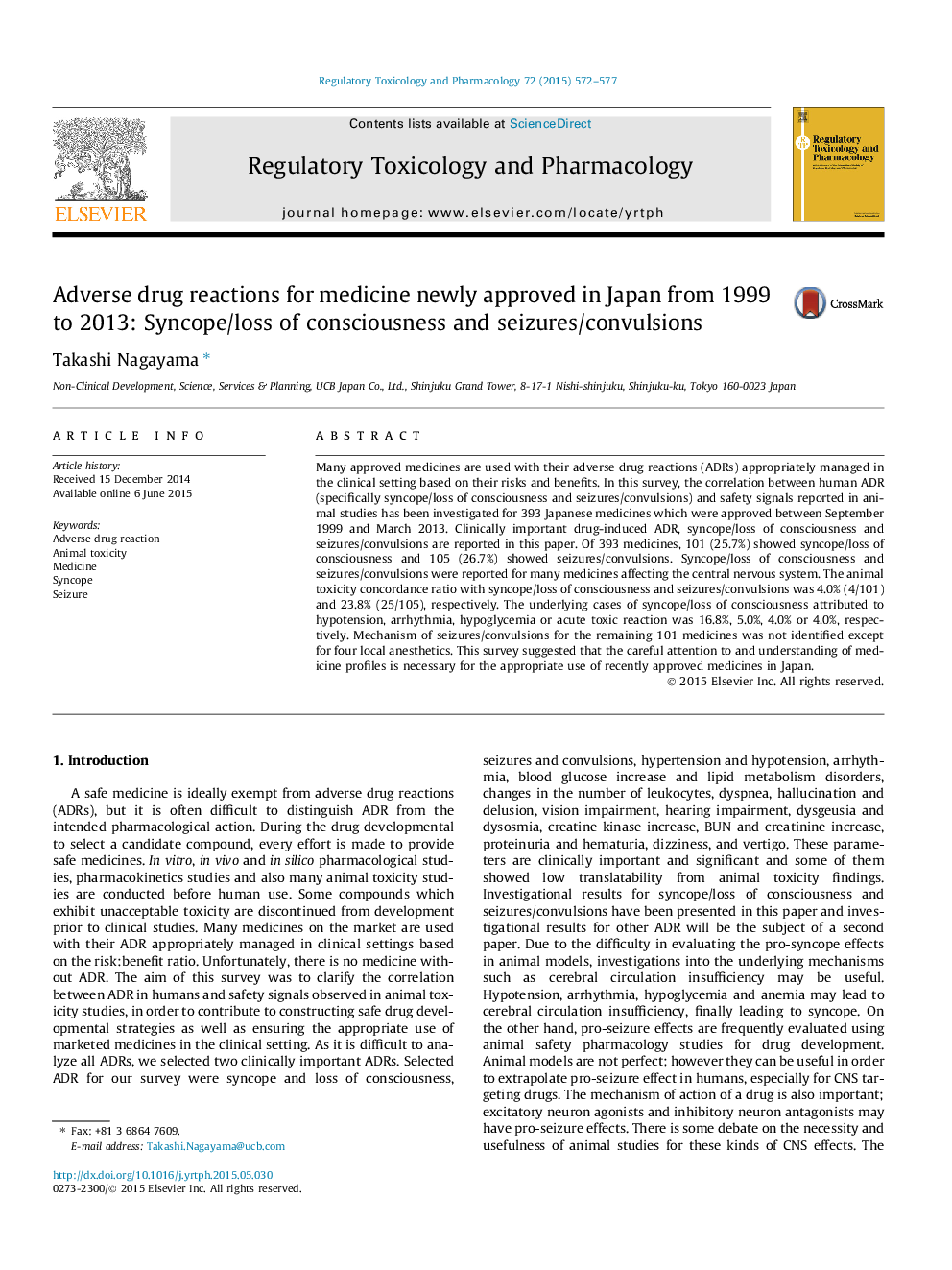| Article ID | Journal | Published Year | Pages | File Type |
|---|---|---|---|---|
| 5856586 | Regulatory Toxicology and Pharmacology | 2015 | 6 Pages |
â¢Syncope and seizures were reported in many medicines affecting the CNS.â¢Animal toxicity concordance ratio with syncope is 4.0% (4/101).â¢Animal toxicity concordance ratio with seizures is only 23.8% (25/105).â¢The mechanism of syncope for 39.6% medicines was identified.â¢The mechanism of seizures for 3.8% medicines was identified.
Many approved medicines are used with their adverse drug reactions (ADRs) appropriately managed in the clinical setting based on their risks and benefits. In this survey, the correlation between human ADR (specifically syncope/loss of consciousness and seizures/convulsions) and safety signals reported in animal studies has been investigated for 393 Japanese medicines which were approved between September 1999 and March 2013. Clinically important drug-induced ADR, syncope/loss of consciousness and seizures/convulsions are reported in this paper. Of 393 medicines, 101 (25.7%) showed syncope/loss of consciousness and 105 (26.7%) showed seizures/convulsions. Syncope/loss of consciousness and seizures/convulsions were reported for many medicines affecting the central nervous system. The animal toxicity concordance ratio with syncope/loss of consciousness and seizures/convulsions was 4.0% (4/101) and 23.8% (25/105), respectively. The underlying cases of syncope/loss of consciousness attributed to hypotension, arrhythmia, hypoglycemia or acute toxic reaction was 16.8%, 5.0%, 4.0% or 4.0%, respectively. Mechanism of seizures/convulsions for the remaining 101 medicines was not identified except for four local anesthetics. This survey suggested that the careful attention to and understanding of medicine profiles is necessary for the appropriate use of recently approved medicines in Japan.
